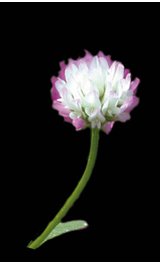Vista (Trifolium michelianum) is an annual temperate pasture legume that grows during the autumn, winter and spring periods. Vista is a late maturing (similar to Bolta), hard seeded Annual Clover that is well suited for medium to high rainfall environments. It demonstrates semierect growth when grown in a mixed sward situation but will remain prostrate if grown as a pure sward or grazed. Leaf size and shape can vary significantly. Vista generally has plain leaves or leaves with a white crescent and demonstrates little pink or silver colouration, as can be observed with Frontier or Paradana. Whilst Vista can provide excellent herbage production particularly in spring conditions it was selected for its superior autumn and winter production compared to Paradana & Bolta. Seed size of Vista is 15-20% larger than Paradana, which will assist with much improved seedling vigour allowing better establishment. Vista is an excellent pasture variety which is suited to heavy grazing. It is highly digestible (14-18% crude protein) and can be used on its own or in pasture mixtures that may consist of Persian Clover, Sub-Clover, Grasses or Lucerne. Vista provides added benefits as a disease break while also fixing nitrogen.
Establishment
The recommended planting rate for Vista Balansa Clover is:
7-12kg/ha (Pure)
3-6kg/ha (Mixes)
New sown stands can be grazed lightly during the 1st year of establishment. Hay cuts and heavy grazing should be avoided if regeneration is desired. Stock should be removed at the first sign of budding to increase the levels of seed set for regeneration in the following year.
Variety Management / Agronomy
Due to Vista’s hard seeded nature, it will demonstrate excellent levels of regeneration and persists well under set stocking. Improved production will occur should you graze regenerating pastures soon after the autumn break. This will help minimise the competition level from weeds as seedlings can be slow to establish. Pastures can be grazed hard from early winter through to budding and flowering. In established stands, light to moderate grazing can continue during the flowering period and low to moderate levels of seed set can still be achieved. As with many pure legume stands, Balansa Clover can cause bloat in livestock but this is not commonly observe.
Disease / pest resistance
Vista is tolerant of Clover Scorch (Kabatiella caulivora) but can be susceptible to Pythium during the seedling stage, given suitable conditions. No other significant diseases have been recorded in Vista.
Vista is susceptible to Red Legged Earth Mites (Halotydeus destructor) and Lucerne Flea (Sminthurus virdis), as per other balansa clovers, particularly during the establishment period and control measures need to be undertaken. In field situations it has been noted that Vista has good tolerance to Cowpea Aphid (Aphis craccivora), Blue-Green Aphid (Acyrthosiphon kondoi) and Spotted Alfalfa Aphid (Therioaphis trifolii). Moderate aphid damage may occur and control may be required to minimise damage.



.jpg?height=370&width=880&mode=crop&converttowebp=0)
